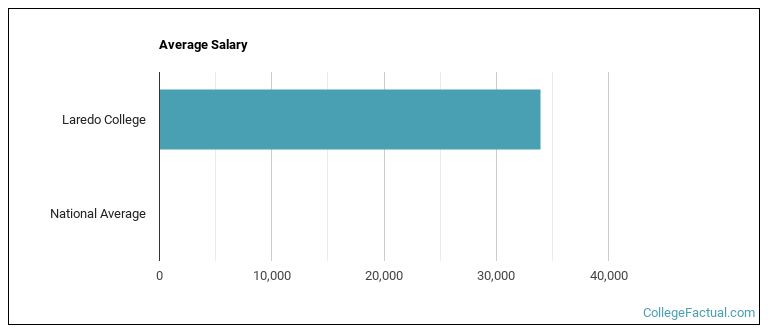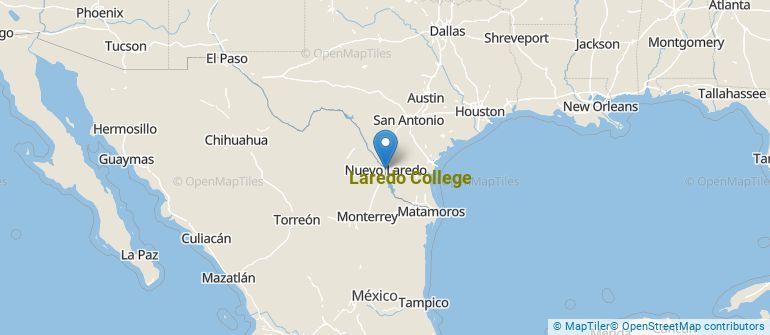 by our College Data Analytics Team
by our College Data Analytics Team
College Factual analyzes over 2,000 colleges and universities in its annual rankings and ranks them in a variety of ways, including most diverse, best overall quality, best for non-traditional students, and much more.
Laredo College was awarded 14 badges in the 2025 rankings. The highest ranked major at the school is health professions.
Explore the best ranked schools for the programs you are most interested in.
According to College Factual's 2025 analysis, Laredo College is ranked #1,522 out of 2,152 schools in the nation that were analyzed for overall quality. This is an improvement over the previous year, when Laredo College held the #1,783 spot on the Best Overall Colleges list.
Laredo College also holds the #74 spot on the Best Colleges in Texas ranking.
Laredo College has an open admissions policy, so you should not have much trouble being accepted by the school. Still, it is important to fill out the application completely and submit any requested materials, which may include proof that you have a high school diploma or the equivalent.
The student to faculty ratio is often used as a measure to gauge how much access students will have to their professors - the lower the number, the better. At Laredo College, this rate is 26 to 1, which is high when compared to the national average of 15 to 1.
Another measure that is often used to estimate how much access students will have to their professors is how many faculty members are full-time. The idea here is that part-time faculty tend to spend less time on campus, so they may not be as available to students as full-timers.
The full-time faculty percentage at Laredo College is 60%. This is higher than the national average of 47%.
During the 2017-2018 academic year, there were 9,292 undergraduates at Laredo College with 2,752 being full-time and 6,540 being part-time.
The net price is calculated by adding tuition, room, board and other costs and subtracting financial aid.Note that the net price is typically less than the published for a school. For more information on the sticker price of Laredo College, see our tuition and fees and room and board pages.
It's not uncommon for college students to take out loans to pay for school. In fact, almost 66% of students nationwide depend at least partially on loans. At Laredo College, approximately 10% of students took out student loans averaging $1,356 a year. That adds up to $5,424 over four years for those students.
The student loan default rate at Laredo College is 1.0%. This is significantly lower than the national default rate of 10.1%, which is a good sign that you'll be able to pay back your student loans.

Get more details about the location of Laredo College.

Contact details for Laredo College are given below.
| Contact Details | |
|---|---|
| Address: | West End Washington St, Laredo, TX 78040-4395 |
| Phone: | 956-721-5140 |
| Website: | www.laredo.edu/ |
| Most Popular Majors | Bachelor’s Degrees | Average Salary of Graduates |
|---|---|---|
| Liberal Arts General Studies | 1,025 | NA |
| Electronics Maintenance & Repair | 120 | NA |
| Precision Metal Working | 118 | NA |
| Marketing | 103 | NA |
| Environmental Control Technology | 97 | NA |
| Criminal Justice & Corrections | 84 | NA |
| Practical Nursing & Nursing Assistants | 76 | NA |
| Vehicle Maintenance & Repair | 66 | NA |
| Information Technology | 49 | NA |
| Electrical & Power Transmission Installers | 45 | NA |
Online learning is becoming popular at even the oldest colleges and universities in the United States. Not only are online classes great for returning adults with busy schedules, they are also frequented by a growing number of traditional students.
In 2022-2023, 3,752 students took at least one online class at Laredo College. This is a decrease from the 6,960 students who took online classes the previous year.
| Year | Took at Least One Online Class | Took All Classes Online |
|---|---|---|
| 2022-2023 | 3,752 | 1,920 |
| 2021-2022 | 6,960 | 4,816 |
| 2020-2021 | 7,246 | 5,780 |
| 2018-2019 | 2,242 | 601 |
Footnotes
*The racial-ethnic minorities count is calculated by taking the total number of students and subtracting white students, international students, and students whose race/ethnicity was unknown. This number is then divided by the total number of students at the school to obtain the racial-ethnic minorities percentage.
References
More about our data sources and methodologies.